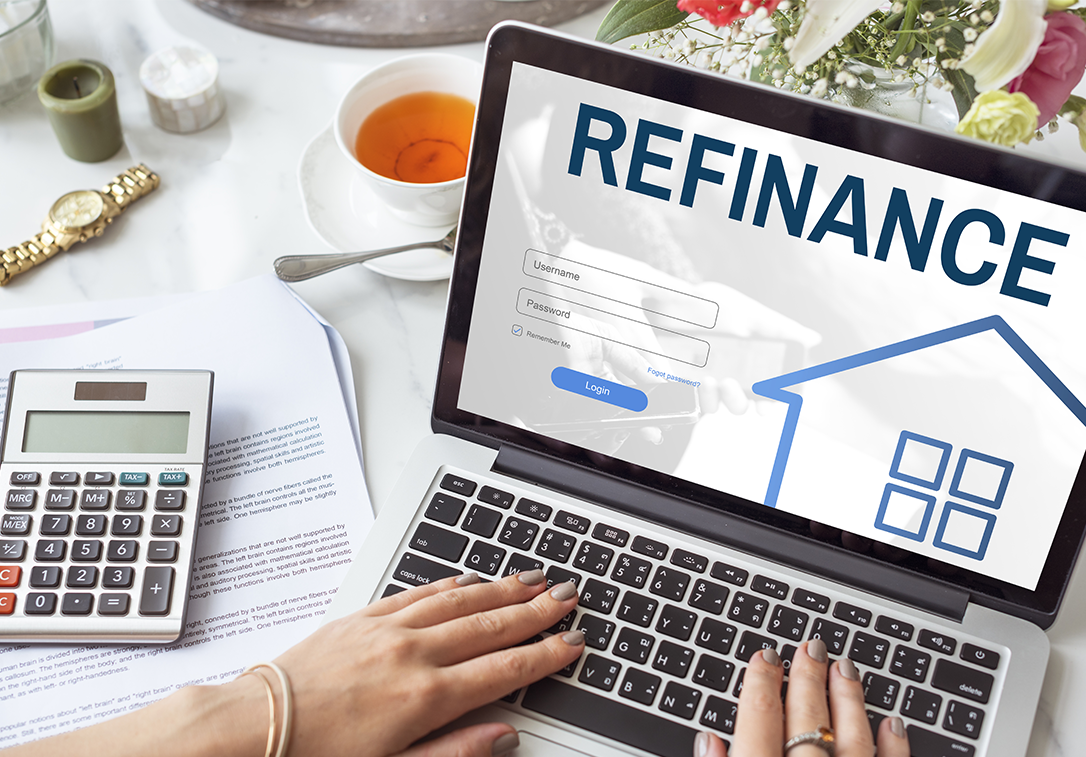Homeowners often look into refinancing to meet their financial goals. This could mean lowering interest rates, shortening the loan term, tapping into home equity, or consolidating debt. Experts at Bankrate say there are many mortgage refinance options out there. Each one has its own benefits and things to think about.
Key Takeaways
- Refinancing can help homeowners achieve various financial goals, such as reducing interest rates or accessing home equity.
- The most common refinance options include rate-and-term, cash-out, cash-in, streamline, no-closing-cost, short, and reverse mortgage refinances.
- Each refinance type has its own costs, benefits, and requirements that should be carefully evaluated to determine the best fit for the homeowner’s needs.
- Factors like credit scores, home values, and loan-to-value ratios can impact the available refinancing options and terms.
- Consulting with a mortgage professional can help homeowners navigate the refinancing process and select the most suitable option.
Rate-and-Term Refinance
Refinancing your home is a popular choice, especially the rate-and-term refinance. It lets homeowners swap their current mortgage for a new one. This can lead to lower interest rates or a shorter loan term, saving you money.
Lowering Interest Rates
One big plus of rate-and-term refinance is getting lower interest rates. A new, lower rate means smaller monthly payments and more savings over time. This is great for those who now have a higher rate due to market changes or their financial situation back then.
Shortening Loan Terms
Another benefit is the chance to shorten the loan term. Switching to a 15-year mortgage, for example, helps you pay off your home faster and save on interest. It’s a good choice if you can manage the higher monthly payments to be debt-free sooner.
Whether you want to refinance to lower your payment or pay off your mortgage faster, this option gives you the flexibility to meet your financial goals.
Cash-Out Refinance
A cash-out refinance lets homeowners use their property’s equity. They swap their old mortgage for a new, bigger loan. This way, they get cash to spend on things like fixing up their home, paying off debt, or for other financial goals.
Accessing Home Equity
Using a cash-out refinance, homeowners can reach their home’s equity. This is great for those who have built up a lot of equity and need cash for certain financial goals. But, remember, this means you’ll owe more on your loan and might pay more each month.
Debt Consolidation3>
Many people use cash-out refinance funds for debt consolidation. They pay off high-interest debts like credit cards or personal loans with it. Then, they have just one, lower-interest mortgage payment each month. This can make managing money easier and might save them money over time.
| Refinance Option | Key Benefit | Potential Drawbacks |
|---|---|---|
| Cash-Out Refinance | Access home equity for various purposes | Higher loan balance and monthly payments |
| Debt Consolidation | Combine high-interest debts into a single, lower-interest mortgage payment | Longer repayment period and potential for increased overall interest paid |
Before choosing a cash-out refinance, homeowners should think about their financial goals and the loan’s long-term effects. Knowing the good and bad can help them make a choice that fits their needs and situation.
Cash-In Refinance

In a cash-in refinance, homeowners pay a lump sum to lower their mortgage balance before refinancing. This method can make the loan-to-value (LTV) ratio lower. It might also get rid of the need for private mortgage insurance (PMI). It’s a great choice for those wanting to reduce their outstanding principal and better their finances.
One big plus of a cash-in refinance is lowering the LTV ratio. By paying down the loan with equity or a down payment, homeowners can get a better refinance deal. This can lead to:
- Getting a lower interest rate on the new mortgage
- Possibly avoiding private mortgage insurance (PMI)
- Lowering the mortgage balance and monthly payments
For homeowners with a lot of equity or extra cash, a cash-in refinance can be smart. It helps to improve mortgage terms and cut long-term costs.
| Benefit | Impact |
|---|---|
| Lowering LTV Ratio | Potential for lower interest rates and elimination of PMI |
| Reducing Mortgage Balance | Decreased monthly payments and long-term interest costs |
| Improved Financial Standing | Enhanced ability to qualify for favorable refinancing terms |
If you want to lower your LTV, reduce your mortgage balance, or improve your finances, think about a cash-in refinance. By looking at your goals and finances, you can choose wisely. This way, you can meet your financial goals.
FHA Streamline Refinance

Homeowners with FHA loans can use the FHA streamline refinance to lower their interest rates or monthly payments. This process is simpler and quicker than a traditional FHA loan refinance. It requires less paperwork and underwriting.
The FHA streamline refinance makes refinancing easier for those with FHA mortgages. It often skips the need for a new home appraisal, credit check, or income proof. This makes the whole process faster and easier.
To get an FHA streamline refinance, homeowners must meet certain requirements:
- Have an FHA loan already
- Make at least 6 on-time mortgage payments in a row
- Show a clear financial gain, like a lower interest rate or payment
With the FHA streamline refinance, eligible homeowners can save money each month. They don’t have to go through the usual refinancing steps. This is a great way to improve their FHA loan terms without the trouble.
“The FHA streamline refinance is a game-changer for homeowners with existing FHA loans. It offers a simple and efficient way to lower your monthly payments and get better terms, without all the red tape of a standard refinance.”
VA Streamline Refinance
The VA Streamline refinance, also known as the Interest Rate Reduction Refinance Loan (IRRRL), is great for military veterans and active-duty service members with a VA loan. It lets borrowers lower their interest rates and monthly payments easily. They don’t need a credit check or a home appraisal.
Benefits for Veterans
The main perk of the VA Streamline refinance is making it easier and cheaper to refinance a VA loan. It’s made to be simpler and more accessible for those who have already used the VA loan program.
- Potentially lower interest rates and monthly payments
- No need for a credit check or home appraisal
- Faster and more efficient refinancing process
- Opportunity to shorten the loan term or access home equity
For veterans wanting to refinance their VA loan, the VA Streamline refinance is a strong option. It offers the chance for a more affordable mortgage without the usual hassle and cost of a traditional refinance.
Reverse Mortgage

As people get older, they often need more money for retirement. A reverse mortgage is a great way to get this extra cash. It lets homeowners over 62 turn their home’s value into money they can use without paying taxes on it.
This type of loan doesn’t require monthly payments. You only pay it back when you sell your home, move out, or pass away. It’s perfect for retirees who need money for health costs, fixing up their home, or just living better.
Retirement Income: Tapping into Home Equity
For those close to or already retired, a reverse mortgage is worth looking into. It uses the equity in your home to give you more money. This is great for those with little savings or pensions, offering a steady way to live well in retirement.
- Eliminate monthly mortgage payments
- Receive tax-free cash from home equity
- Supplement retirement income
- Cover medical expenses or home repairs
“A reverse mortgage can be a game-changer for retirees who want to maintain their lifestyle and financial security without the burden of traditional mortgage payments.”
Before getting a reverse mortgage, make sure it fits your financial plans. Know the good and bad sides to decide if it’s right for you.
Refinancing Options
Homeowners have more than just the standard rate-and-term or cash-out refinance options. These refinance loan types, or mortgage refinance choices, have unique benefits. They can meet different home refinance alternatives and financial goals.
The no-closing-cost refinance is one such option. It lets homeowners skip the upfront costs by adding them to the new loan. This might mean a slightly higher interest rate. But, it’s a good choice for those wanting to cut down on immediate costs.
Another option is the short refinance. It’s great for homeowners at risk of foreclosure. It resets the mortgage balance to the current home value. This can lower the loan amount and monthly payments. It’s a good solution for those facing financial trouble and wanting to avoid foreclosure.
| Refinance Option | Key Benefits |
|---|---|
| No-Closing-Cost Refinance | Avoids upfront costs by rolling them into the new loan |
| Short Refinance | Resets mortgage balance to current home value, potentially reducing loan amount and payments |
When looking at refinancing options, homeowners should think about their financial goals and situation. This helps them pick the best mortgage refinance choice for their needs. By looking at all the home refinance alternatives, homeowners can find a refinance that fits their goals and financial future.
No-Closing-Cost Refinance
Refinancing your mortgage can help you get lower interest rates or tap into your home’s equity. But, the closing costs can be a big hurdle for many. A no-closing-cost refinance can help you avoid these upfront fees.
With this type of refinance, the lender pays the closing costs. In return, you get a slightly higher interest rate on your new loan. This is great for those who don’t have cash for closing costs but want better loan terms. These can include a lower interest rate or shorter loan term.
A no-closing-cost refinance lets you refinance with no upfront fees and avoid closing costs. It’s perfect for homeowners planning to stay put for a few years. The savings from a lower interest rate might be more than the slightly higher rate over time.
Avoiding Upfront Costs
The main perk of a no-closing-cost refinance is skipping the usual closing costs. These can be 2% to 5% of the loan’s amount. Costs include:
- Application fees
- Appraisal fees
- Title search and insurance
- Origination fees
- Prepaid items (such as property taxes and insurance)
Choosing a no-closing-cost refinance means you can refinance to avoid closing costs. This could save you thousands upfront. It’s especially good for homeowners who are low on cash or want to cut down on refinancing costs.
Even though a no-closing-cost refinance is handy, remember, the lender might increase the interest rate to make up for the costs. Homeowners should weigh the long-term savings against the higher rate’s cost over the loan’s life.
Short Refinance
The short refinance is a lifesaver for homeowners who owe more on their mortgage than their home’s value. It lets homeowners refinance to a balance that matches their home’s current market value. This solution helps those who are “underwater” on their mortgage.
Avoiding Foreclosure: The Short Refinance Advantage
For homeowners worried about foreclosure, a short refinance can change everything. It resets the mortgage to a payment that’s easier to manage. This way, it helps avoid foreclosure and brings financial stability back.
The process involves talking with the lender to accept a lower payoff amount. This reduces the underwater mortgage burden. It’s a win-win for both the homeowner and the lender.
Homeowners can use the short refinance to take back control of their finances and avoid foreclosure. It’s a powerful option that’s often overlooked. By understanding it, homeowners can make smart choices and move towards a more stable financial future.
Choosing the Right Option
When looking at choosing a refinance option, homeowners should think about their refinancing goals and the costs. This careful planning helps them pick the best option for their financial situation.
Evaluating Your Refinancing Goals
The first step is to set clear financial goals. Are you trying to lower your interest rates, reduce your monthly payments, or access your home’s equity? Knowing your main goal helps you find the right refinance type.
Considering the Costs
It’s also key to look at the costs of each option. This includes closing costs, fees, and how they might affect your loan balance and payments. By looking at these costs, you can pick the most affordable refinance that meets your goals.
| Refinance Option | Potential Benefits | Typical Costs |
|---|---|---|
| Rate-and-Term Refinance | Lower interest rates, shorter loan terms | Closing costs, typically 2-5% of the loan amount |
| Cash-Out Refinance | Access home equity, debt consolidation | Closing costs, higher interest rates, increased loan balance |
| FHA Streamline Refinance | Reduced paperwork, lower interest rates | Upfront mortgage insurance premium, potentially higher rates |
By looking at your refinancing goals and the costs, you can pick the right refinance option. This ensures you meet your financial needs and situation.
Also Read: What Risks Are Associated With Unsecured Loans?
Conclusion
Homeowners have many mortgage refinance options to choose from, each suited for different financial goals. Whether you want to lower your interest rates, use your home’s equity, or prevent foreclosure, there’s a refinance plan for you. It’s important to look at your goals and the costs involved to pick the right refinance option.
The mortgage refinance summary and refinancing options overview in this article give a clear view of the choices available. You can pick from rate-and-term refinances, cash-out, cash-in, and government-backed streamline options. This means you can tailor your financing to fit your needs and improve your financial health.
Success in refinancing comes from careful planning and understanding your needs. By learning about each refinance type and its pros and cons, homeowners can confidently make the right choice for their financial future.
FAQs
Q: What are the different types of mortgage refinance available?
A: The main types of mortgage refinance include rate-and-term refinance, cash-out refinance, and streamline refinance. Each type serves different purposes, such as lowering your mortgage rate, borrowing against your home equity, or simplifying the refinancing process.
Q: How do refinance rates affect my decision to refinance a mortgage?
A: Refinance rates significantly impact your decision to refinance your mortgage. Lower refinance rates can help you save money over the life of the loan, reducing your monthly mortgage payment and overall interest costs.
Q: What is the cost to refinance my existing mortgage?
A: The cost to refinance typically includes loan origination fees, appraisal fees, title insurance, and other closing costs. These costs can range from 2% to 5% of the loan amount, so it’s essential to calculate if the savings from lower mortgage rates justify the expenses.
Q: Should I consider an adjustable-rate mortgage when I refinance a mortgage?
A: An adjustable-rate mortgage (ARM) may be an option if you plan to stay in your home for a short time and want lower initial rates. However, the variability in payments over time can be a risk, so it’s essential to weigh the pros and cons of refinancing with an ARM carefully.
Q: What are the pros and cons of refinancing my home?
A: The pros of refinancing your home include potentially lower monthly payments, reduced interest rates, and access to cash through home equity. The cons can include closing costs, the possibility of extending the loan term, and the risk of hurting your credit score during the application process.
Q: How does refinancing allow me to pay off my existing loan faster?
A: Refinancing allows you to change your existing loan terms, such as opting for a shorter loan duration, which can help you pay off your mortgage faster. This often results in paying less interest over the life of the loan.
Q: Can I use a refinance calculator to determine the best refinance options?
A: Yes, a refinance calculator can be a helpful tool to estimate potential savings from various refinance options, helping you compare different mortgage rates, loan terms, and costs associated with refinancing your mortgage.
Q: What types of refinance loans are available for FHA and USDA loans?
A: FHA and USDA loans have specific refinance options, such as the FHA Streamline Refinance and USDA Streamlined Assist, which allow eligible borrowers to refinance with reduced documentation and potentially lower costs compared to conventional refinance loans.
Q: How can I find the best refinance options with my mortgage lender?
A: To find the best refinance options, compare offers from multiple mortgage lenders, consider current mortgage rates, and evaluate the different types of loans available. It’s also good to check if the lender offers any special programs or incentives for refinancing.
Source Links
- https://www.bankrate.com/mortgages/choose-the-right-kind-of-refinance/
- https://myhome.freddiemac.com/refinancing/options-for-refinancing
- https://www.rocketmortgage.com/learn/types-of-refinance